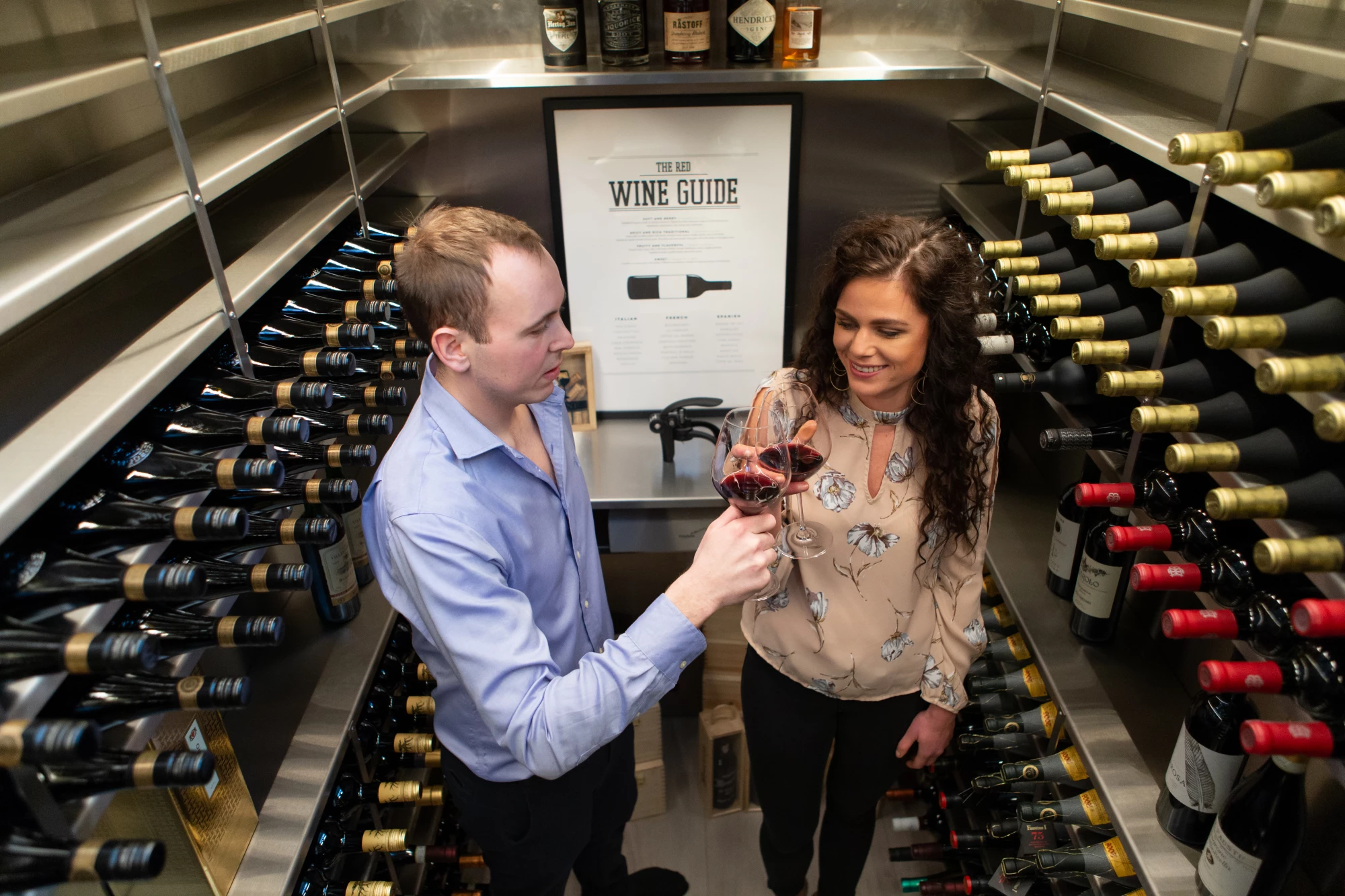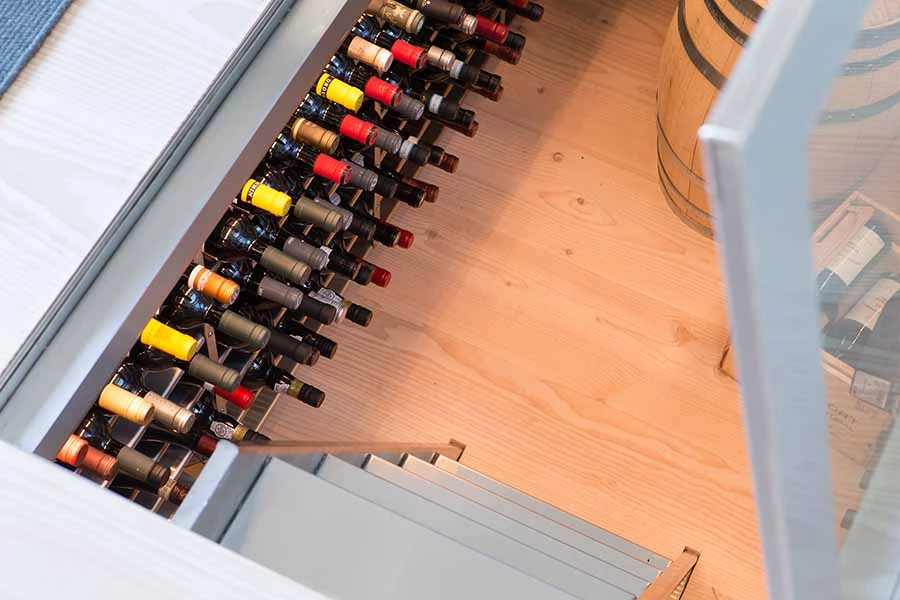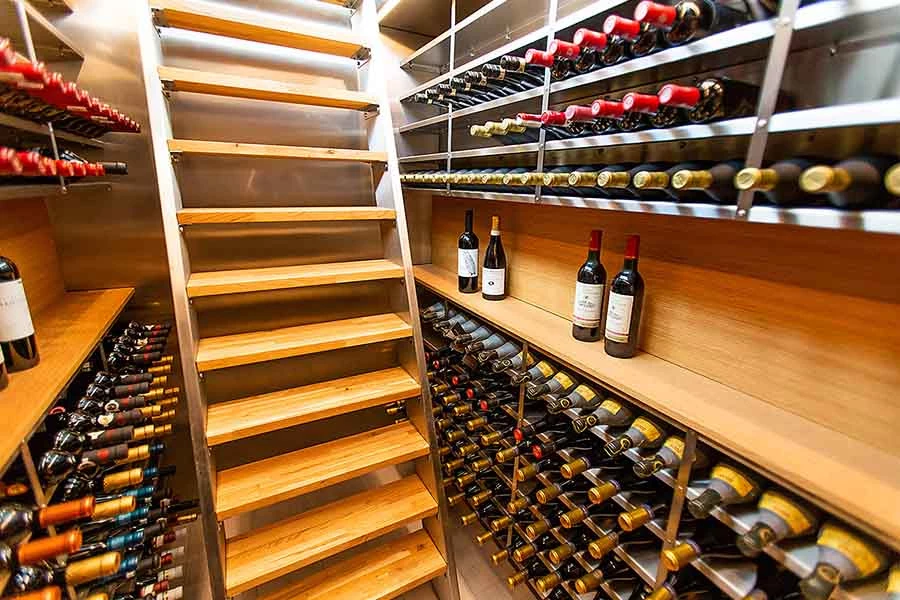Wine cellar temperature
The wine cellar temperature plays a crucial role in how the wine is stored and develops over time. High temperatures can speed up the aging process and negatively impact the taste, while low temperatures can hinder the wine's development. A consistent and stable temperature is therefore essential to preserve the wine's quality and character.
In this guide, we will explore why the right temperature is vital, what is considered ideal storage conditions, and how you can ensure your wines are stored under optimal temperature conditions.

Correct temperature in the wine cellar
The correct temperature in the Wine Cellar is one of the most important factors in preserving the quality of wine over time. In general, it is recommended to store wine at a consistent temperature between 10-14°C for optimal aging. Red wine is often best stored between 12-16°C, while white wine and sparkling wine thrive at lower temperatures, typically around 8-12°C.
As a general tip: Red wine does well at a slightly higher temperature, while white wine and sparkling wine require lower temperatures to maintain their freshness and structure. Remember, your wine collection should be tailored to both the temperature and storage conditions to ensure the best tasting experience over time.
Temperature fluctuations in the wine cellar
Temperature fluctuations can severely impact the quality of wine. Wine develops best under stable conditions, and large temperature changes can affect both taste and aroma. Significant fluctuations can cause the wine to expand and contract, leading to cork leakage and exposure to air, which compromises the wine's development.
To maintain stability, consider investing in a climate control system that regulates both temperature and humidity. Placing the cellar in a cool, insulated location without heat sources is also key to protecting the wine.
Temperature in wine cellars from us
Wine cellars placed underground have a unique climate that can be ideal for wine storage, as the temperature in the ground usually remains stable throughout the year. In general, a wine cellar placed underground will maintain a temperature between 14-17°C, depending on factors such as location, soil temperature, and surrounding climate conditions.
The natural temperature stability is one of the key benefits of placing a wine cellar underground. The earth acts as an insulating layer that protects the wine from extreme temperatures, providing a consistent and steady climate ideal for long-term wine storage. However, the temperature may vary slightly depending on how deep the wine cellar is placed and its geographical location. Therefore, wine cellars placed deeper in the ground tend to be a little cooler, while those closer to ground level may be warmer.
Although the temperature in an underground wine cellar is a significant advantage, it's important to note that there can be some variations. It’s always a good idea to check that the wine cellar remains within the ideal temperature range for storing your wine, typically between 10-16°C for red wine and 8-12°C for white and sparkling wines.
An underground wine cellar can be an excellent solution for wine storage, but it's important to consider the specific needs of your wine collection to ensure your wine is kept under optimal conditions.
Factors that can affect the quality of wine
When storing wine, temperature is important, but vibrations and humidity also play a significant role in the wine's quality and development over time.
Vibrations: Excessive vibrations can disrupt the aging process of wine, interfering with its delicate aromas and potentially affecting its overall flavor. Constant movement can also cause the cork to loosen, leading to leakage and exposure to air, which can spoil the wine. It’s crucial to store wine in a stable and quiet environment, away from sources of vibration such as electrical appliances, household traffic, or heavy machinery.
Humidity: The right humidity level is essential for preserving the integrity of the cork. Too low humidity can dry out the cork, allowing air to enter the bottle and causing oxidation. On the other hand, too high humidity can promote mold growth and damage labels. The ideal humidity for wine storage is between 60-70%. To help you manage this, we offer a guide on humidity in wine cellars with more detailed information on how to maintain the perfect environment for your collection.
In conclusion, a wine cellar should be free from vibrations, have controlled humidity, and maintain an optimal temperature. For long-term storage, especially when dealing with valuable wines, investing in a climate-controlled system that regulates both temperature and humidity can be a wise decision to preserve your wine’s quality for years to come.


Wine fridge for precise temperature control
If you need a very specific temperature for your wine collection, a wine fridge can be an excellent solution. A wine fridge allows you to easily adjust and maintain the ideal temperature for different types of wine, whether it's red, white, or sparkling wine. This is particularly useful if you store a variety of wines that each have unique temperature requirements or if you want to ensure the optimal serving temperature at all times.
Additionally, a wine fridge helps protect your collection from external influences such as light, odors, and vibrations. These factors can negatively impact the wine's quality over time, and the wine fridge provides a controlled environment to preserve the wine’s flavor, aroma, and overall integrity. With the right temperature and protection, your wines can age gracefully and be ready for enjoyment whenever you choose.
Wine cellar as extra storage space
Wine cellars can be adapted for storing items other than wine, as long as they can withstand temperatures between 14-17 degrees. This makes them ideal for storing specialties like olive oil, vinegar, canned goods, and other non-temperature-sensitive foods. Additionally, a wine cellar can be used to store exclusive ingredients, rare beverages, or even delicacies that require dark and stable conditions. You can easily customize the interior with shelves, drawers, or specially designed solutions to meet your needs. By utilizing the flexibility of the wine cellar, you can create a practical and stylish storage solution for multiple purposes. For more inspiration, visit our wine cellar humidity guide page.
Summary of Wine cellar temperature
Storing wine properly requires maintaining the right temperature, humidity, and stability. A consistent temperature between 12-16°C is ideal for most wines, with red wine preferring slightly warmer conditions. Temperature fluctuations can cause leaks and affect taste. Vibrations and humidity also play a role—too low humidity can dry out the cork, while high humidity can promote mold. For long-term storage, consider a wine cellar or wine fridge with to preserve your wine and ensure it ages well.
Contact us for assistance with your wine cellar
Do you need help choosing a wine cellar, installation, or have other questions? We are happy to assist you with guidance on different models, customization options, and practical solutions for your home. Whether you are looking for a space-saving solution or a larger wine cellar, we will find an option that suits your needs. We can also advise you on design choices, materials, and how to best integrate the wine cellar into your home. Contact us – we’re here to help!
